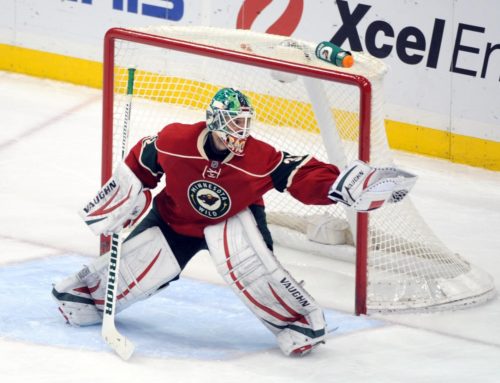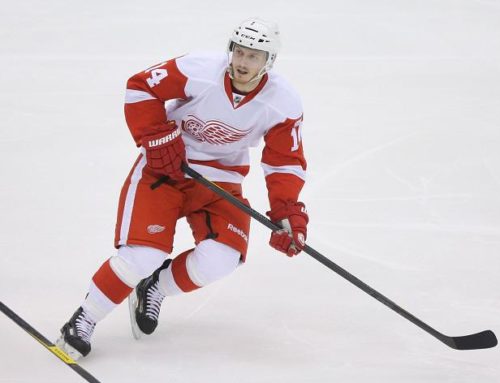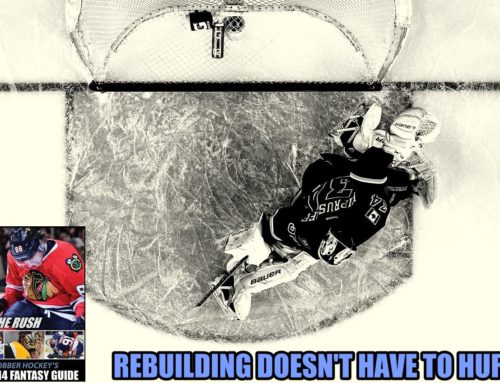
In marketing, they call it brand recognition. You aren’t going to the drug store to buy Kleenex, you’re going to buy facial tissues. Your loving girlfriend isn’t bringing you Tylenol to cure the beer-induced headache from last night, she’s bringing you acetaminophen. The value these names hold are worth far more than the actual product is. The same can be applied to players in fantasy hockey.
How many times have we seen a player score 100 points for a season or two only to never break the 85 point barrier again? How many times have we seen a rookie have a huge first year only to fade into obscurity just as quick as he arrived? The trick is to recognize these players before everyone else does and trade them before their stock drops completely. Buy low/sell high, not breaking any new ground here. It’s just another example of how to apply it.
Here are a few examples of players whose name still holds more value than their actual stats do.
Vinny Lecavalier
Lecavalier is perhaps the best example of brand recognition in recent memory. He broke out in the 06-07 season with 108 points having never topped 80 in his career. He followed it up with a 92-point campaign in 07-08. He was being drafted in the first round of every league and deservedly so. He had reached that elite status. The following season, to the dismay of fantasy owners everywhere, he put up a meagre 67-points in 77 games. “It’s an anomaly”, they said. “He was playing injured” , they cried. Vinny still went fairly high in many 09-10 fantasy drafts and he managed to score 70-points in a full season. Those aren’t horrible numbers, just not numbers you want to spend a second round draft pick on.
This season, he has 46 points in 56 games. Pro-rated it works out to 67 points. That’s about right; maybe a little lower than what it should be since he battled some injuries. Vinny Lecavalier is a 70-75 point player and he always has been. He had two spectacular seasons, but those were the anomaly, not the norm. To prove it, look at this breakdown (if he played fewer than 80 games, stats are pro-rated):
<50 points: 2 seasons
60-70 points: 3 seasons
71-80 points: 4 seasons
90+ points: 2 seasons
At 31 years old, he is still in his prime. The problem is that the stars aligned for him for two seasons that raised expectations to unrealistic levels. Many poolies out there still value him as an 85-90 point player. However, those poolies become fewer and fewer each year. If Vinny is on your roster, and a manager in your league still values him in that way, make a deal before it is too late.
Eric Staal
Staal is 26-years-old and is a franchise player. However, he is a franchise player in the sense that Modano or Sundin were franchise players. He is not in the same boat as Sakic or Yzerman. Staal is not going to put up 100 points year-in and year-out. Yet many poolies value him as if he will, based off his amazing 100 point sophomore season. When Skinner develops, Staal very well could break 100 points once or twice. The chances of him doing it consistently though, are low.
I’m not taking anything away from Staal. Obviously, a 75-80 point player who has the potential to hit 100 is worth more than most guys in that point range. However, he should be valued as a high-end 80 point player rather than a low-end 100 or even 90 point player.
Much like Lecavalier, Staal has consistently produced in the 70-80 point range. He will likely finish in that range again this year. He has one season of 82 points and would have reached that level again last year if it weren’t for a injuries. People still value him higher because when they hear the name “Staal”, they can’t help but think of his 100 point season.
In the next seven or eight years, Staal may very well finish Top 10 in scoring once or twice. That makes him very valuable. That shouldn’t mean that he should be drafted up there with the guys who are going to do it consistently though.
Anze Kopitar
Cue the mob, I’m about to get lynched. Kopitar is only 24-years-old, has all the potential in the world and is playing on one of the most exciting young teams in the NHL. “How the hell can you call him overrated?”, you ask.
Many people treat Kopitar like he is a guaranteed 90-100 point player. He very well might hit those numbers, or better, someday. Until he does, he should be valued at what he is, a point-per-game player. Poolies hear the name “Kopitar” and they start drooling. The kid is a star with the potential to be a superstar. But there’s that word again "potential”. Until Anze proves himself to put up those big numbers on a consistent basis, he should not be valued alongside proven 90+ point players like Joe Thornton or Ilya Kovalchuk.
Highly Touted Rookies
Taylor Hall, John Taveres and yes even Steven Stamkos. A highly touted rookie, especially a first overall pick can often net you a proven point-per-game player in a trade. You are trading potential upside for someone you know will get you steady numbers but may never reach that elite level. Hindsight may make you regret trading Stamkos for Joe Thornton or Rick Nash in the 08-09 season. However, a trade like that could land you a league title that year. That is far better than finish 2nd or 3rd for the next two years.
Let’s look at the rookie point totals for some highly touted picks of the last few years:
Taylor Hall – 65GP, 42P
Tyler Seguin – 72GP, 22P
John Tavares – 82GP, 54P
Matt Duchene – 81GP, 55P
Steven Stamkos – 79GP, 46P
Patrick Kane – 82GP, 72
All these players have 90-point-plus upside and have not given us any reason to doubt they will reach that… someday. To date, Stamkos is the only one to reach that level.
Big name rookies are far more valuable to a re-building club than they are to a contending club. Take advantage of that value and send them packing early for a return that nets you a solid producer. It may just be the step that pushes you to the league title.
A Perfect Example
Early in the 09-10 season, Jonas Gustavsson was making waves as the goalie of the future in Toronto. His stats were nothing special but his name held big value in my keeper league. I had good goaltending, so I sent him packing to a team with poor goaltending for John Taveres who was scoring at a pretty good clip for a rookie. Knowing Tavares would probably slow down, I flipped him and Zach Bogosian (another highly touted rookie) to a re-building team for Marc Savard and Zdeno Chara. This move helped me clinch a playoff spot and if it weren’t for Savard-s concussion, probably could have lead me to a title.
In a couple of years, Bogosian will be a better fantasy option than Chara. Obviously Tavares has already surpassed Savard due to Marc’s concussion issues. However, the 2010-2011 season in that league just came to an end. In part due to Chara’s play in our playoffs, I won that league this year. Even if Bogosian finishes 20-points above Chara next year, that trade is well worth it for the sake of a championship.
Big Name Does Not Necessarily Equal Big Value
There are many other players out there whose names can be more valuable than their stats. Mike Richards is not a consistent point-per-game player but is valued as one. Tomas Plekanec should be treated as a 60 point player not 70+. Marc-Andre Fleury is treated as an elite goalie, but if your league counts peripheral stats, there are probably 10 better choices out there.
Don’t make the same mistake as many NHL general managers do. Putting your stock in a guy who has one or two good seasons can cripple your team. For every Joe Thornton out there, there are three Scott Gomez’, Wade Reddens or Brian Campbells. A player’s value should be judged based on the numbers he consistently produces rather than the potential numbers he could hit. Yes potential plays a factor, but it shouldn’t outweigh his proven track record.
So go ahead and laugh at me at the draft next year when I choose Thornton above Kopitar and I reject your offer of Mike Richards for Jarome Iginla. We’ll see who is laughing when the season is over.
There is no such thing as a perfect system. However, for a contending team; terms like potential and upside should not carry as much weight as words like consistent and proven.





 EDM
EDM FLA
FLA CHI
CHI ANA
ANA CGY
CGY COL
COL
